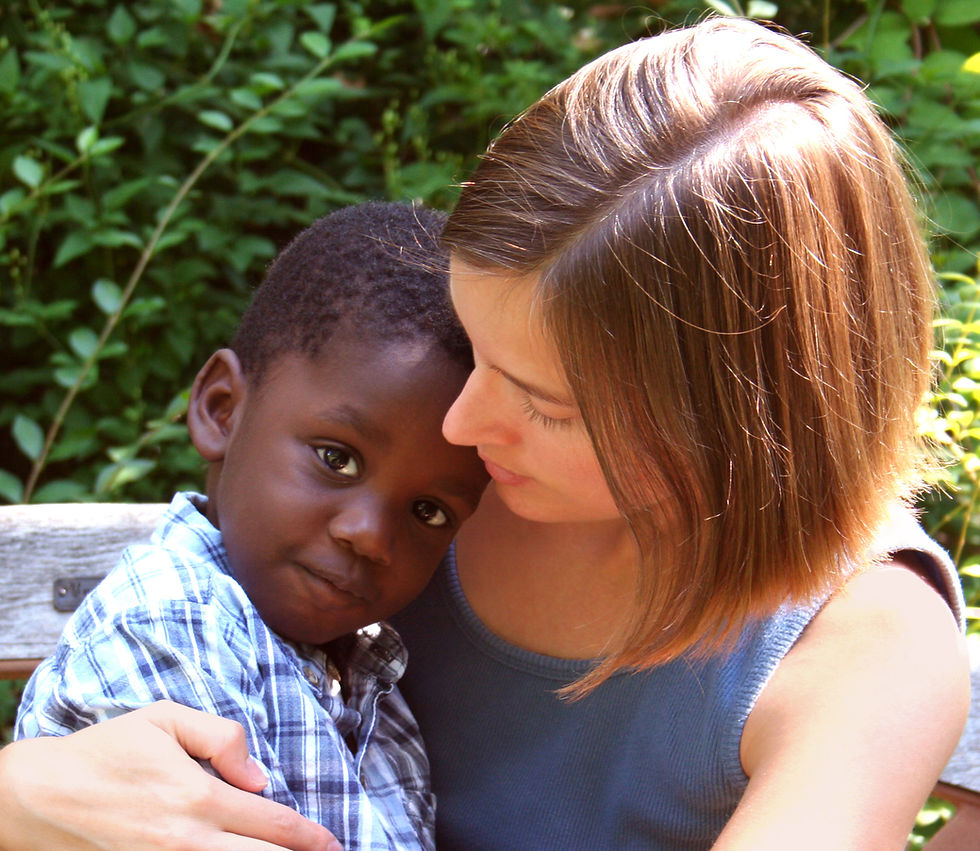Helping Our Children With Attachment And Bonding
- Dr. Mark Andrews

- Jun 26, 2022
- 3 min read
Updated: Jul 1, 2022

Recent research indicates that as many as 85 percent of adopted and foster children may have major struggles with attachment to their parents or significant caregivers. This sounds sobering, but it should not be surprising considering the multiple traumatic experiences these children have endured prior to their first foster home or new adoptive family. Many of these children, whether they have been in abusive and addictive homes, existing on the street, or living in an orphanage that is poorly run, have learned to live by their wits—with “eyes in the back of their head” as the saying goes. For them, the norm has been survival on a daily—and often hourly—basis. Their world has been one of chaos and fear. Their survival mechanism amidst the insanity surrounding and affecting them has been to learn to control their inner world—which in their minds is their only bastion of hope.
Having a sense of control over one’s world is an innate need for all of us. The feeling of having no control leads to a spiral of depression and hopelessness. Consider now the child who comes out of an insane, out-of-control environment into a loving adoptive or foster home. He leaves behind a world of physical and emotional deprivation to arrive in strange new world of having a consistent roof over his head, more than enough food for each meal, and a warm bed of his own. All the bad things are behind him now, and things will be better!—True and not true, at least initially. For you see, although he may cognitively sense his safety, it may take him months or even years to feel completely safe. He has not yet arrived at a state of inner safety. This inner safety is best described as felt safety by Dr. Karyn Purvis and Dr. David Cross in their book The Connected Child.
Helping a new foster or adopted child to move towards an inner feeling of felt safety takes time. It is a process. To them, their need to control their surroundings is as necessary as breathing in order to live. For them, to give up control feels like a fate worse than death. Thus, we see the symptoms of this need to control evidenced in behaviors such as food hoarding, temper outbursts and fits of rage, and routine schedule transitions turning into World War 3. However, parents, take courage! It takes teamwork and rolling up your sleeves on a daily basis, but helping your child move towards felt safety is possible. Here are some helpful strategies:
1. Schedule, schedule, schedule! Make every effort to keep your child’s mealtime, bedtime and getting up time, chore time, etc. consistent.
2. Preceed transitions with “prompts”. Give her five or ten-minute “heads-up” notices prior to transitions such as bedtime, brushing teeth, bath time, leaving the house time, etc. Doing so (along with #1 above) help to develop a sense of healthy inner-control for your child.
3. Repeatedly tell and show your child that you love him, especially after you’ve had to correct him for being obnoxious and disrespectful. And yes, you may have to “fake it until you make it” with this one. It can be really hard, because traumatized kids can be real pros at being obnoxious and disrespectful! But remember, your child is not the sum of his behavior. His negative behavior is a symptom—rooted in his deep need to survive.
Hope this was helpful to you. More on this topic to come in my next blog!





Comments